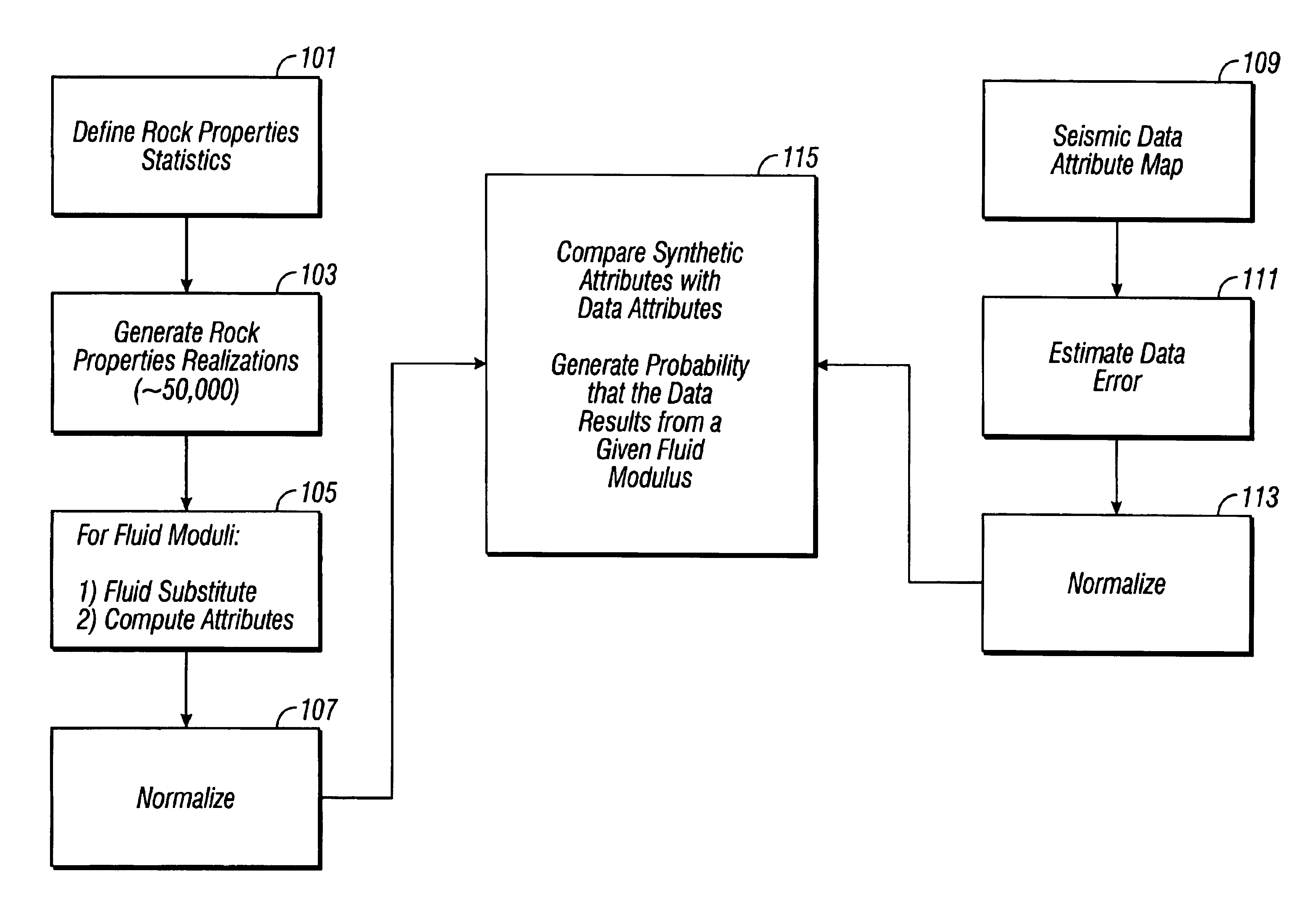Determination of fluid properties of earth formations using stochastic inversion
a technology of earth formations and fluid properties, applied in seismology for waterlogging, using reradiation, instruments, etc., can solve problems such as difficult to distinguish between low gas saturation and full saturation, and the inability to develop techniques for deriving the fluid content of subsurface formations
- Summary
- Abstract
- Description
- Claims
- Application Information
AI Technical Summary
Benefits of technology
Problems solved by technology
Method used
Image
Examples
Embodiment Construction
[0031]Seismic reflection data provides information about reflection coefficients. Depending on source and receiver types, one can obtain compressional, shear or converted wave reflection coefficients. Reflection coefficients also vary with the incidence angle of the reflections. These various reflection coefficients and their angle dependence provide a variety of information about the two rocks at whose contact the reflection occurs.
[0032]But reflection coefficients have one big limitation: they contain information about the pore fluids only in an indirect fashion. It is the pore fluid properties (modulus, density and hydrocarbon saturation) that we would like to have, because they are directly related to the economics of the prospect.
[0033]Unfortunately, we know that deriving pore fluid properties from seismic data is usually an ill-conditioned process. A variety of rock physics parameters must be known to go from reflection coefficients to pore fluid properties, and these are not ...
PUM
 Login to View More
Login to View More Abstract
Description
Claims
Application Information
 Login to View More
Login to View More - R&D
- Intellectual Property
- Life Sciences
- Materials
- Tech Scout
- Unparalleled Data Quality
- Higher Quality Content
- 60% Fewer Hallucinations
Browse by: Latest US Patents, China's latest patents, Technical Efficacy Thesaurus, Application Domain, Technology Topic, Popular Technical Reports.
© 2025 PatSnap. All rights reserved.Legal|Privacy policy|Modern Slavery Act Transparency Statement|Sitemap|About US| Contact US: help@patsnap.com



